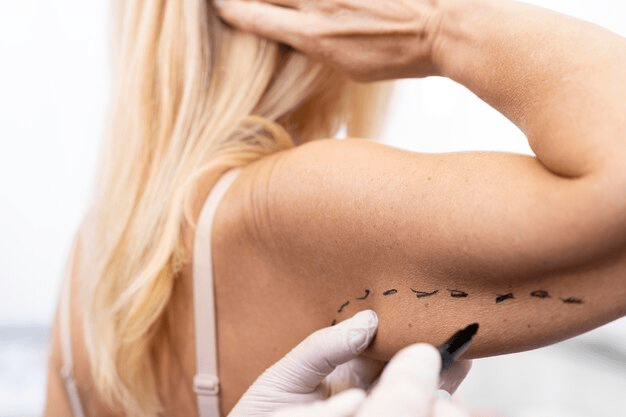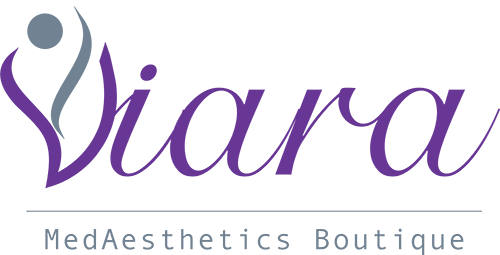Pigmentation
Radiate Confidence
Sculpt Your Confidence with Liposuction at Viara
Pigmentation refers to the natural coloring of the skin, which is determined by the presenceof a pigment called melanin. Melanin is produced by melanocytes, specialized cells found in theskin, and it plays a crucial role in determining the skin’s color and protecting it from the harmfuleffects of UV radiation.

The Art of Liposculpture
Causes of Pigmentation
The Benefits of Liposuction
01
Sun Exposure
Prolonged exposure to ultraviolet (UV) radiation from the sun is one of the primary causes of pigmentation irregularities. UV radiation stimulates melanocytes to produce more melanin, leading to the development of dark spots or patches on the skin, such as sunspots or solar lentigines.
02
Hormonal Changes
Fluctuations in hormone levels can also contribute to pigmentation issues. For example, during pregnancy or while taking oral contraceptives, hormonal changes can trigger the overproduction of melanin, resulting in a condition known as melasma, or "pregnancy mask."
03
Inflammation and Injury
Inflammatory skin conditions, such as acne, eczema, or psoriasis, as well as physical injury to the skin, can lead to post-inflammatory hyperpigmentation (PIH). When the skin is injured or inflamed, melanocytes may produce excess melanin in the affected area, causing dark spots or patches to form as the skin heals.
04
Genetic Factors
Certain genetic factors may predispose individuals to
pigmentation disorders, such as vitiligo or albinism. In vitiligo, for example, the immune system mistakenly attacks and destroys melanocytes, leading to the loss of pigment in the affected areas of the skin. Albinism, on the other hand, is a genetic condition characterized by the absence or reduction of melanin production due to mutations in genes responsible for melanin synthesis.
Types of Pigmentation
01
Hyperpigmentation
This occurs when there is an excess production of melanin, leading to
dark patches or spots on the skin. Common types of hyperpigmentation include sunspots, orsolar lentigines, melasma, post-inflammatory hyperpigmentation (PIH), and freckles.
02
Hypopigmentation
In contrast to hyperpigmentation, hypopigmentation occurs whenthere
is a decrease or loss of melanin production, resulting in lighter patches or spots on the skin.Common types of hypopigmentation include vitiligo and albinism.
Pigmentation Treatments
At our clinic, we offer a range of treatments tailored to address pigmentation concerns andhelp you
achieve a clearer, more even-toned complexion.
The Benefits of Liposuction
01
Topical Treatments
Prescription-strength creams, serums, and gels containing ingredients such as hydroquinone, retinoids, kojic acid, and vitamin C can help lighten and even outpigmentation irregularities.
02
Chemical Peels
Chemical peels involve the application of a chemical solution to exfoliate the outer layers of the skin, revealing smoother, more even-toned skin underneath. They can be effective in reducing the appearance of hyperpigmentation.
and improving skin texture.
03
Laser Therapy
Laser treatments, such as Q-Switch Laser and IPL (Intense Pulsed Light target pigmented cells in the skin, breaking them down and reducing the appearance of pigmentation irregularities. These treatments are safe, effective, and can be tailored to suit individual skin types and concerns.
04
Microdermabrasion
Microdermabrasion is a non-invasive exfoliation technique that uses a handheld device to remove the outer layer of dead skin cells, revealing fresher,more radiant skin underneath. It can help improve the appearance of hyperpigmentation and enhance the effectiveness of topical treatments.
05
Combination Therapies
In some cases, a combination of different treatments may be recommended to achieve optimal results. By combining treatments such as topical agents with in-office procedures like laser therapy or chemical peels, dermatologists can customize treatment plans to address specific concerns and maximize effectiveness. Pigmentation issues can be a challenging and persistent concern, but with the rightapproach and treatment plan, achieving a more even-toned complexion is possible. At our dermatologist clinic, we're dedicated to helping you overcome pigmentation woes and regain confidence in yourskin.
Radiate Confidence
Sculpt Your Confidence with Liposuction at Viara
Schedule a consultation with us today to learn more about our comprehensive range of pigmentation treatments and take the first step towards achieving clearer, more radiant skin.
Unveiling the Beauty of Liposuction
Personalized Consultation for Tailored Transformations
Embark on your journey to a sculpted silhouette with a personalized consultation. Our expert dermatologists will take the time to understand your body goals, discuss your expectations, and create a customized plan for optimal liposuction results.
Advanced Liposuction Techniques
Experience the precision of our advanced liposuction techniques. From targeted fat removal to body contouring, our procedures are designed to provide natural-looking results, sculpting your body with finesse and skill.
Comfortable Procedure Experience
Relax in the comfort of our studio as our skilled professionals perform your liposuction procedure. Our commitment to patient comfort ensures that the experience is as pleasant as possible, with minimal downtime and a swift return to your daily activities.
Natural-Looking and Lasting Results
Enjoy the confidence that comes with a sculpted silhouette. Our liposuction procedures provide natural-looking and lasting results, allowing you to showcase your newfound contours with pride.
Post-Treatment Care
Aftercare Guidelines
Compression Garments
Advice: Wear compression garments as directed to support healing, minimize swelling, and enhance skin contraction.
Activity Gradation
Advice: Gradually reintroduce physical activities, following the surgeon's Recommendations to avoid strain during the recovery period.
Hydration and Nutrition
Advice: Stay well-hydrated and consume a balanced diet rich in nutrients to support the body's natural healing processes.
Follow-Up Appointments
Advice: Attend scheduled follow-up appointments to monitor progress and address any concerns promptly.
Dietary Suggestions
Optimizing Nutrition for Recovery
01
Protein-Rich Diet
Recommendation: Prioritize lean proteins to aid in tissue repair and recovery.
02
Antioxidant-Loaded Foods
Recommendation: Incorporate fruits and vegetables rich in antioxidants to combat
oxidative stress and support healing.
03
Hydration is Key
Recommendation: Maintain adequate hydration for optimal recovery and skin elasticity.
04
Omega-3 Fatty Acids
Recommendation: Include sources of omega-3 fatty acids, such as fish and flaxseeds, to minimize inflammation.
General questions
Frequently Asked Questions
Addressing Your Concerns
01.
02.
03.
04.
05.
06.
07.
